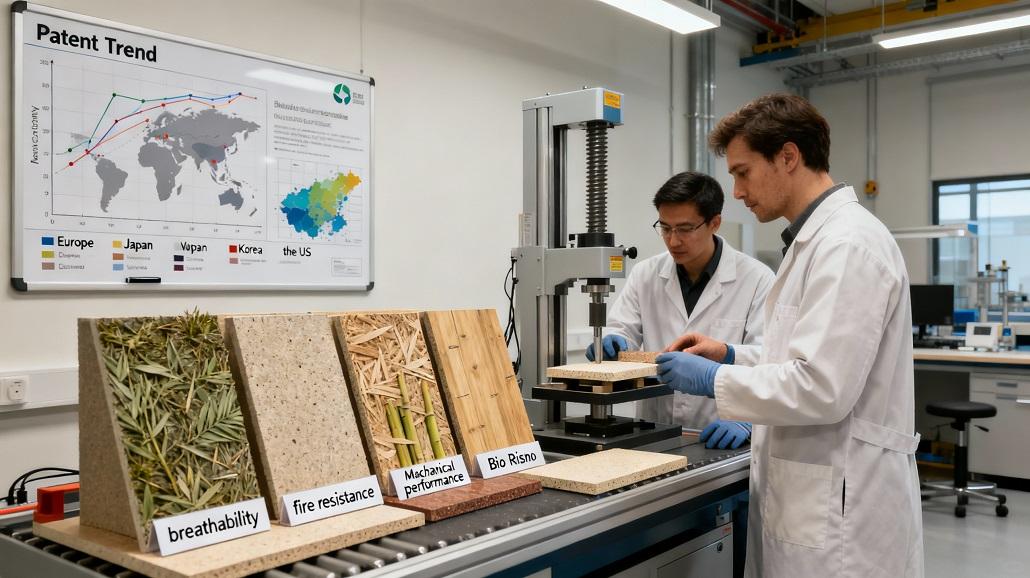Biomass continues to make its mark for sustainable building materials – latest report Innovation in sustainable chemical feedstocks – including biomass and food waste – has reached an inflection point according to the latest patent data reported by Appleyard Lees.
However, the construction industry is notable for ongoing innovation in products for bio-based building materials. These are among the findings in the fifth annual edition of the now-published Inside Green Innovation: Progress Report from the leading intellectual property firm. After a general upward trend in patent filings for biomass feedstocks over more than a decade, innovation activity has levelled off (from a seven per cent year-on-year increase in 2021, to a one per cent drop in 2022 and a less than one half per cent increase in 2023) and yet remains at the second highest-ever level. Patent applications for chemical feedstocks from agriculture and food waste are now at their second lowest level in almost a decade (189 filings in 2023 versus 184 in 2022 and 193 in 2015).
Appleyard Lees’ partner, Chris Mason, said: “The transition to sustainable feedstocks has its challenges. Technical barriers in processing, economic competitiveness, supply chain logistics and regulatory uncertainties all influence the pace of innovation in sustainable chemical feedstocks. “However, waste streams and biomass are increasingly recognised as viable alternatives to fossil-based resources, supported by advances in recycling technologies, biochemical processing and shown in applications such as construction.” Biomass boom in the building sector Innovation in biomass-derived products for building and construction has continued a general increase which began 50 years ago. Materials such as wood, hemp, flax, bamboo and bio-resins have found applications such as insulation, composites, structural components and coatings.
Amelia Foster, patent attorney at Appleyard Lees, added: “These materials offer advantages including lower embodied carbon, renewability and improved life-cycle performance compared to traditional petrochemical-based alternatives. Equally, advances in processing technologies are enhancing durability, fire resistance and mechanical properties, making bio-based feedstocks more attractive in construction materials.”
Countries and companies For innovation in bio-based materials for construction, French manufacturer, Saint Gobain, recorded the highest number of patent filings in the latest data (2023), followed by Swiss multinational, Sika Tech AG. Bio-based materials for construction attracting the most innovation activity include cellulose, lignin, hemp, algae, biochar and starch. Annual patent filings for biomass feedstocks overall are now highest in Europe (982), followed by Japan (947), Korea (895) and the US (840). Foster said: “Innovation in sustainable chemical feedstocks is set to remain an essential driver in the transition to a circular and low-carbon chemical industry, and patent activity will continue to serve as a valuable barometer of this progress.”






























